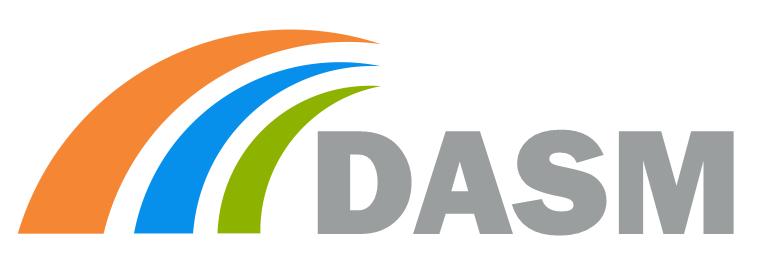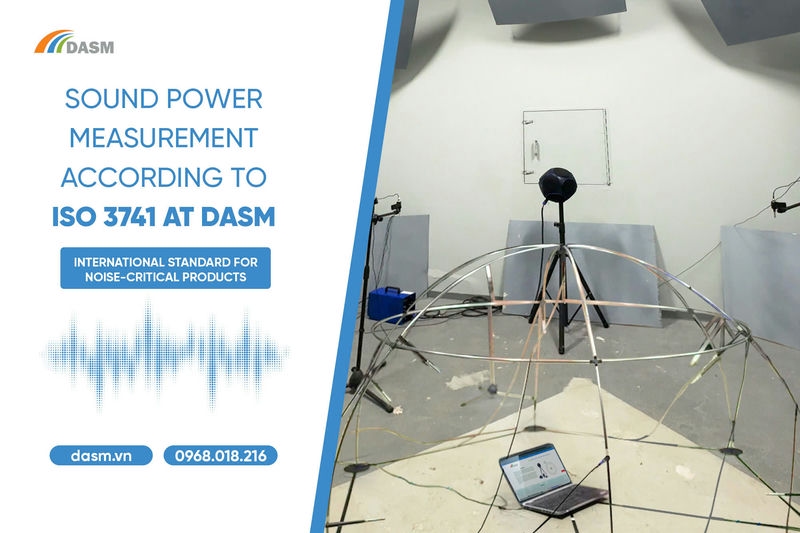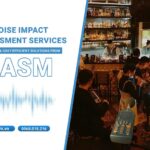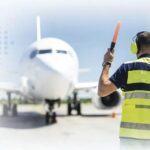DASM Institute is one of the pioneering organizations in Vietnam to implement sound power measurement in accordance with ISO 3741 standards. Our acoustic testing services guarantees accuracy, speed, and full compliance with international standards.
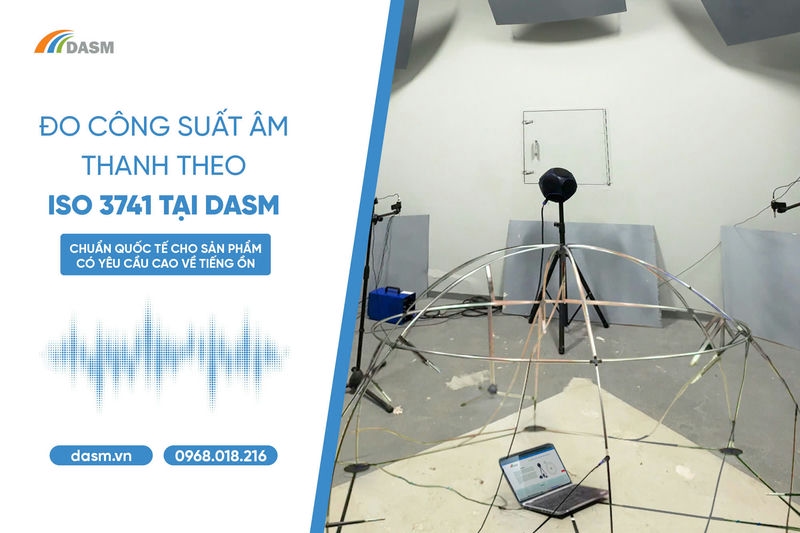
In today’s globalized industrial landscape, ensuring product quality and compliance with stringent technical standards is paramount. Particularly in industries such as HVAC, electromechanics, automation, household appliances, and industrial equipment, assessing the acoustic performance of devices is crucial for both internal quality control and meeting export requirements to markets with strict regulations like the EU, USA, Japan, and South Korea.
One of the most rigorous and widely adopted standards for this purpose is ISO 3741:2010 – Acoustics — Determination of sound power levels of noise sources using sound pressure — Precision methods for reverberation test rooms. DASM Institute stands as a pioneer in Vietnam, offering ISO 3741-compliant sound power measurement services, ensuring accurate, swift, and internationally standardized results.
Adapter Noise Measurement According to ISO 3745-2012 – Quality Inspection at DASM Institute
DASM Certified for Acoustic Testing Activities
Soundproofing Test of Remak® XPS Foam in an Impedance Tube at DASM
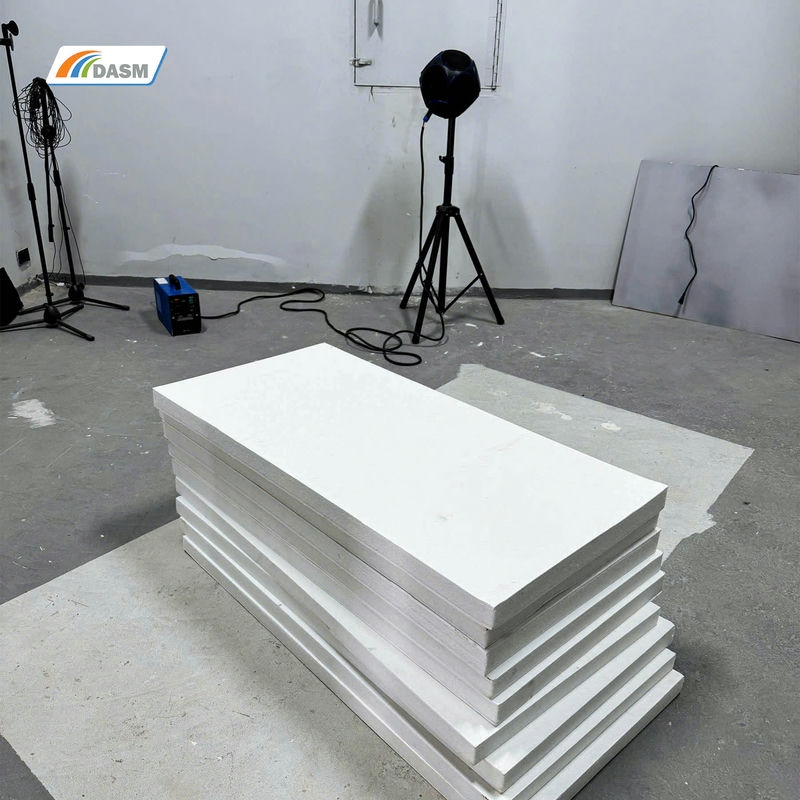
Understanding ISO 3741 Sound Power Measurement
ISO 3741:2010 specifies precision methods for determining the sound power level (Lw) of a noise source from sound pressure levels measured in a reverberation test room. This method is essential for:
- Comparing designs across different equipment models
- Evaluating noise emissions for environmental compliance
- Providing technical evidence for certifications such as CE, RoHS, UL, and JIS
- Optimizing acoustic performance in product development
The standard is applicable when the device under test is relatively small compared to the volume of the test room, and when the emitted noise falls within measurable ranges with an appropriate signal-to-noise ratio.
DASM’s Reverberation Test Room: Foundation for Accurate Lw Measurements
- DASM’s testing facility is meticulously designed to meet the stringent requirements of ISO 3741, featuring:
- Uniform reverberant field: Controlled reverberation time (RT60) across the frequency range of 100 Hz to 5000 Hz, ensuring spatial uniformity of the sound field.
- Low background noise: Ambient noise levels maintained below specified thresholds to prevent measurement interference.
- Class 1 measurement equipment: Utilization of Type 1 sound level microphones compliant with IEC 61672-1, real-time signal analyzers, and data acquisition systems with high resolution.
- ISO/IEC 17025 Calibration: All equipment is calibrated according to ISO/IEC 17025 standards, with traceability to international references.
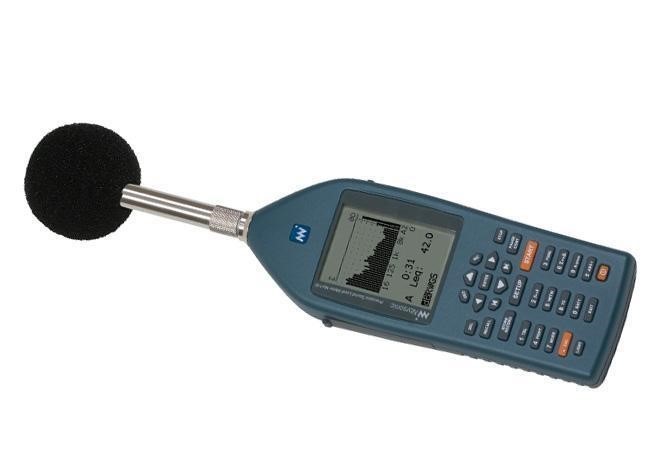
Why choose DASM for ISO 3741 sound power measurement?
- Cost and time efficiency: Eliminate the need to send samples abroad, reducing logistics costs and accelerating the evaluation process.
- Internationally recognized reports: DASM provides bilingual (Vietnamese–English) reports valid for technical documentation, product assessments, and certifications like CE, RoHS, and UL.
- State-of-the-art equipment: Employing Class 1 measurement devices and ISO 17025-calibrated instruments ensures high accuracy and reliability.
- Comprehensive industry coverage: Services applicable to a wide range of products, including industrial fans, generators, HVAC systems, household appliances, and more.
- Rapid turnaround: Typical processing time of 3–5 working days.
- Expert technical support: DASM’s experienced acoustic engineers provide in-depth analysis and recommendations for product development and noise control.
Applicable products for ISO 3741 measurement at DASM
- Industrial fans (axial, centrifugal)
- Air compressors and generators
- HVAC equipment: AHUs, FCUs, residential and commercial air conditioners
- Household appliances: range hoods, air purifiers, washing machines
- Power supplies, electric motors, control cabinets
DASM’s ISO 3741 Measurement Procedure
- Device reception and technical documentation: Clients provide equipment specifications, operating conditions, and installation diagrams.
- Installation in reverberation room: The device is positioned centrally, maintaining minimum distances from walls to avoid boundary effects.
- Sound pressure level measurements: Measurements are taken at 6–12 fixed points using stationary or rotating microphones, covering octave or one-third octave bands from 100 Hz to 10 kHz.
- Sound Power Level Calculation: Using the formula:
Lw = Lp + 10 × log10 (A/A0)
Where:
Lp: Average sound pressure level
A: Equivalent sound absorption area of the room
A0: Reference area (1 m²)
- Data Analysis and Reporting: Adjustments for background noise and room characteristics are applied. A comprehensive report, including frequency spectra and technical recommendations, is issued.
Frequently Asked Questions (FAQ)
Q1: How does sound power level (Lw) differ from sound pressure level (Lp)?
A1: Lp depends on the measurement location and distance from the source, while Lw is an intrinsic property of the source, independent of the environment.
Q2: How often should a product’s sound power be measured?
A2: It’s advisable to conduct measurements for each new product version or before entering international markets to ensure compliance with relevant standards.
Q3: Can measurements be conducted on-site at our facility?
A3: On-site measurements can be performed following ISO 3744 standards; however, for higher accuracy, especially for certification purposes, testing in DASM’s reverberation room is recommended.
